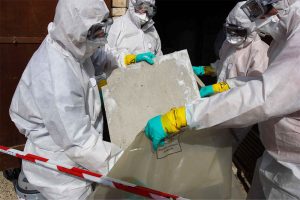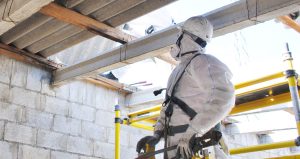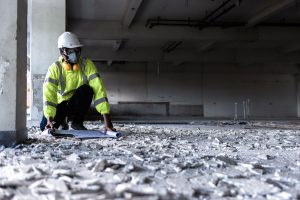Asbestos – The Silent Killer
Asbestos is known as the ‘silent killer’ because the devastating health effects of asbestos inhalation can take decades to develop. Tragically, by the time diagnosis occurs it’s often too late to do anything. The four major diseases associated with asbestos inhalation are: asbestosis, mesothelioma (a cancer in the lining of the lungs), lung cancer, and shortness of breath as the result of pleural thickening.
How Does Asbestos Inhalation Occur?
Materials that contain asbestos are harmless until they become damaged, or are disturbed. When this happens, microscopic asbestos fibres are released into the air and can easily be inhaled without noticing. Ongoing inhalation gives rise to the range of diseases mentioned above. Asbestos inhalation occurs as the result of:
- Historic occupational inhalation in environments where appropriate precautions weren’t taken
- Contemporary inhalation due to lack of management or removal of asbestos in buildings constructed prior to 1999
In 1999 asbestos was banned for use in the UK, but its legacy remains. Current estimates suggest that there are still 500,000 commercial buildings containing asbestos. This is a situation that needs to be monitored and managed.
Poor Asbestos Management Continues in the UK
The Institution of Occupational Safety & Health (IOSH) recently published a report demonstrating that 20 years after the ban on asbestos use, employees are still being exposed to the hazardous material. Over the past year 130 companies and individuals have been found to be put employees at risk, as a result of non-compliance with asbestos regulations.
IOSH has condemned this non-compliance. Over 5,000 workers die every year as the result of asbestos inhalation. Often the damage occurred at work, 30 or 40 years ago. There is still no way to cure the diseases caused exposure to the hazardous material, and every effort must be made to avoid repeating our mistakes in the current generation.
Avanti Provides Asbestos Surveys, Management and Removals
In the UK, building owners or managers for industrial or commercial properties, are required to manage Asbestos Containing Materials (ACMs). If the building was constructed prior to 1999, it’s likely to contain asbestos. It should be professionally surveyed, therefore and any ACMs discovered need to be recorded, risk assessed and managed.
Planned refurbishment or demolition of a pre-1999 building requires an exhaustive survey, and licensed removal of ACMs before the work continues. Asbestos removal is a hazardous process and needs to be carried out by trained professionals. The Avanti team are HSE licensed removals experts, with both the qualifications and years of experience working on buildings containing asbestos.



